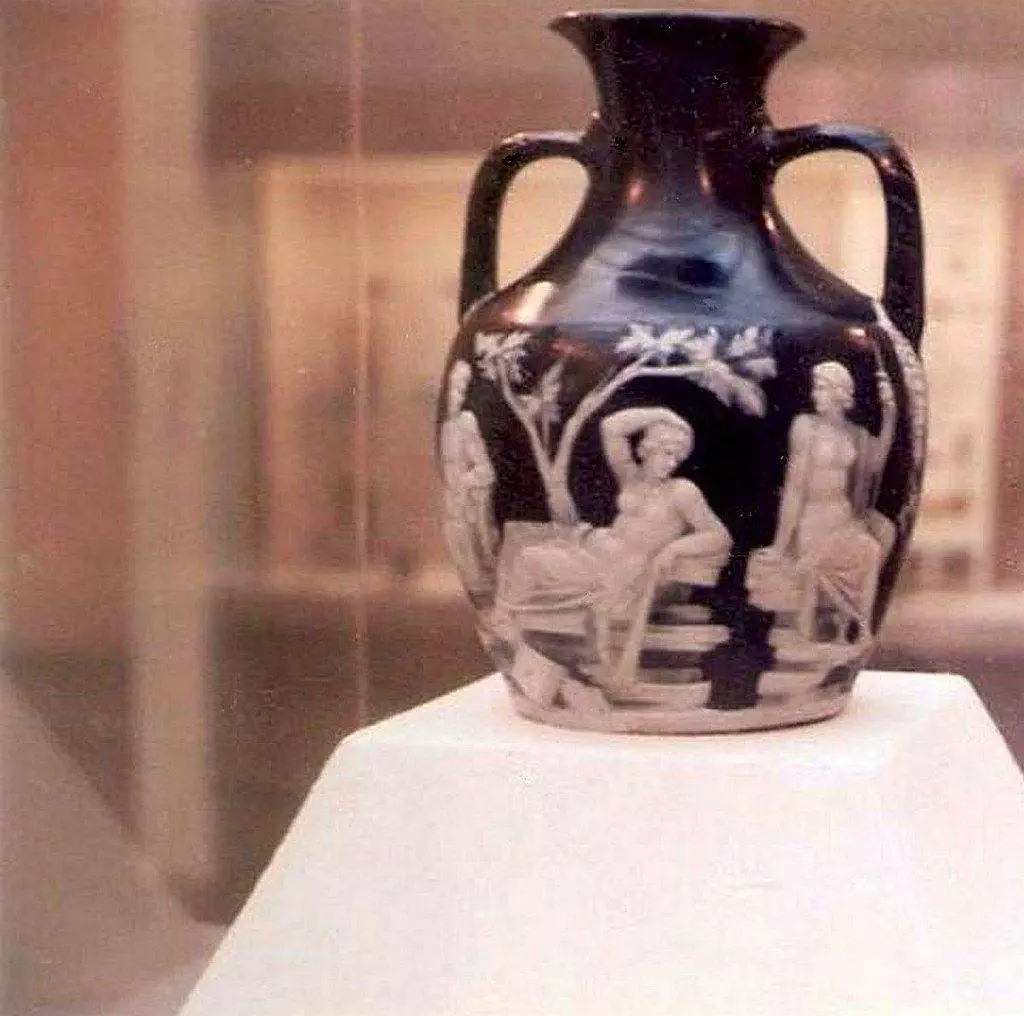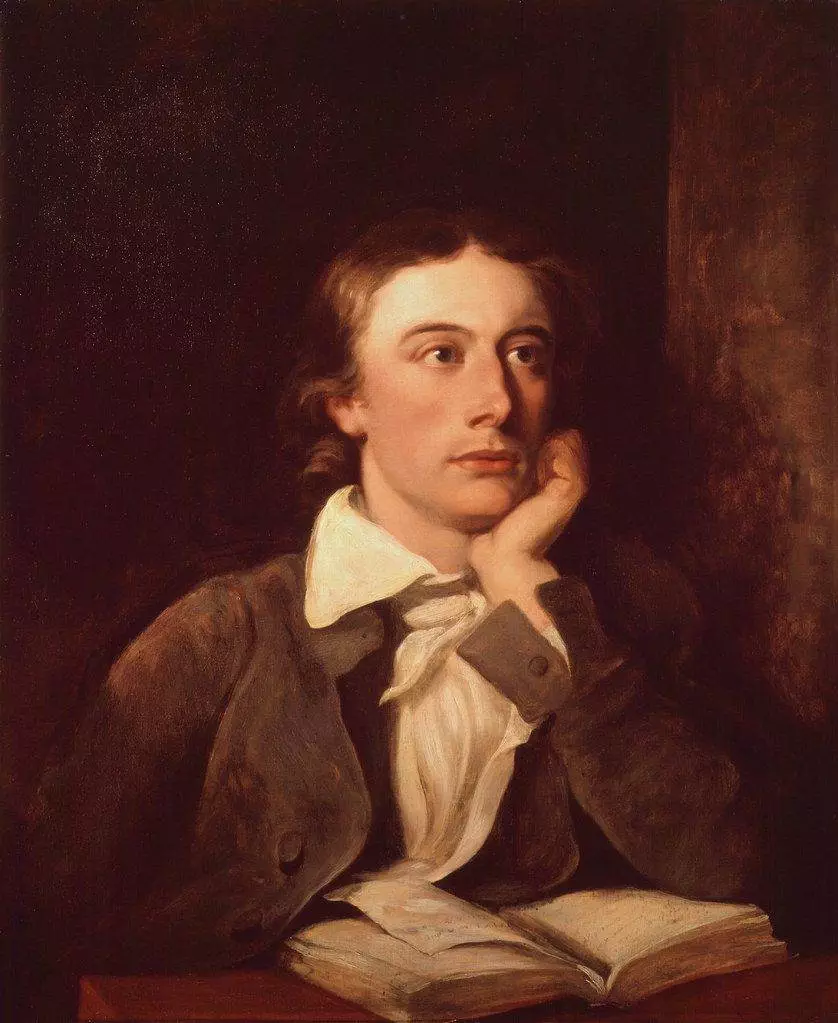John Keats was an English poet who lived from 1795 to 1821. He is considered one of the greatest poets of the Romantic era. Keats’s poetry is characterized by its beauty, its passion, and its exploration of the human condition.
One of Keats’s most famous poems is “Ode on a Grecian Urn.” The poem was written in 1819 and is addressed to a Grecian urn, a type of vase that was often decorated with scenes from Greek mythology. The poem is a meditation on the nature of art, beauty, and life.

The poem begins with the speaker addressing the urn as a “sylvan historian” (line 1). The speaker then goes on to describe the scenes depicted on the urn, including a procession of maidens, a lover pursuing a nymph, and a sacrifice. The speaker is struck by the beauty of the scenes on the urn, but he is also aware of their impermanence. The maidens on the urn will never grow old, the lover will never catch the nymph, and the sacrifice will never be completed.
The speaker is also aware of the difference between the world of the urn and the world of the living. The urn is a world of beauty and perfection, while the world of the living is a world of pain and suffering. The speaker is drawn to the world of the urn, but he knows that he can never truly be a part of it.
The poem ends with the speaker praising the urn for its beauty and its ability to capture a moment in time forever. The urn is a reminder that even though life is fleeting, beauty can be eternal.
“Ode on a Grecian Urn” is a beautiful and thought-provoking poem that explores the nature of art, beauty, and life. It is a poem that has been enjoyed by readers for centuries.
Table of Contents
Detailed Summary of Ode on a Grecian Urn
Ode on a Grecian Urn is divided into five stanzas, each of which focuses on a different aspect of the urn. In the first stanza, the speaker addresses the urn as a “sylvan historian” (line 1). The speaker then goes on to describe the scenes depicted on the urn, including a procession of maidens, a lover pursuing a nymph, and a sacrifice.
The second stanza focuses on the procession of maidens. The speaker is struck by the beauty of the maidens, but he is also aware of their impermanence. The maidens on the urn will never grow old, they will never experience the pain and suffering of the world, and they will never die. The speaker is drawn to the beauty of the maidens, but he is also aware that their beauty is fleeting.
The third stanza of Ode on a Grecian Urn focuses on the lover pursuing a nymph. The lover on the urn is never able to catch the nymph. The speaker is struck by the futility of the lover’s pursuit, but he is also aware of the beauty of the lover’s passion. The speaker knows that the lover will never be able to possess the nymph, but he also knows that the lover’s passion is a source of beauty.

The fourth stanza focuses on the sacrifice. The speaker is struck by the violence of the sacrifice, but he is also aware of the beauty of the sacrifice. The sacrifice is a reminder of the power of love, but it is also a reminder of the pain and suffering that love can cause.
The fifth stanza concludes the poem. The speaker praises the urn for its beauty and its ability to capture a moment in time forever. The urn is a reminder that even though life is fleeting, beauty can be eternal.
The poem is a meditation on the nature of art, beauty, and life. The poem explores the relationship between art and nature, the nature of beauty, and the meaning of life. The poem is a beautiful and thought-provoking poem that has been enjoyed by readers for centuries.
Here are some of the key themes that are explored in Ode on a Grecian Urn:
- The relationship between art and nature: The poem explores the relationship between art and nature. The urn is a work of art, but it is also a representation of nature. The poem suggests that art can capture the beauty of nature, but it can also distort it.
- The nature of beauty: The poem explores the nature of beauty. The poem suggests that beauty is both fleeting and eternal. The maidens on the urn are beautiful, but they are also fleeting. The sacrifice on the urn is beautiful, but it is also violent. The poem suggests that beauty is both a source of joy and a source of pain.
- The meaning of life: The poem explores the meaning of life. The poem suggests that life is both fleeting and eternal. The lover on the urn is never able to catch the nymph, but his passion is a source of beauty. The sacrifice on the urn is a reminder of the power of love, but it is also a reminder of the pain and suffering that love can cause. The poem suggests that life is a journey, and that the meaning of life is to find beauty and joy in the journey.
The poem is a beautiful and thought-provoking poem that has been enjoyed by readers for centuries. It is a poem that explores the nature of art, beauty, and life.
Analysis of the Poem
Themes
The relationship between art and nature
Ode on a Grecian Urn explores the relationship between art and nature. The urn is a work of art, but it is also a representation of nature. The poem suggests that art can capture the beauty of nature, but it can also distort it. For example, the maidens on the urn are frozen in time, which is something that is not possible in nature.
The nature of beauty
The poem explores the nature of beauty. The poem suggests that beauty is both fleeting and eternal. The maidens on the urn are beautiful, but they are also fleeting. The sacrifice on the urn is beautiful, but it is also violent. The poem suggests that beauty is both a source of joy and a source of pain.
The meaning of life
Ode on a Grecian Urn explores the meaning of life. The poem suggests that life is both fleeting and eternal. The lover on the urn is never able to catch the nymph, but his passion is a source of beauty. The sacrifice on the urn is a reminder of the power of love, but it is also a reminder of the pain and suffering that love can cause. The poem suggests that life is a journey, and that the meaning of life is to find beauty and joy in the journey.
Summing-up
“Ode on a Grecian Urn” is a beautiful and thought-provoking poem that explores the nature of art, beauty, and life. The poem is full of personification, paradox, and allusion. It is a poem that has been enjoyed by readers for centuries.
The poem begins with the speaker addressing the urn as an “Unravished bride”. This personification gives the urn a sense of life and agency. It suggests that the urn is not just a passive object, but that it is capable of telling stories.
The poem then goes on to describe the scenes depicted on the urn. These scenes include a procession of maidens, a sacrifice, and a lover pursuing a nymph. The speaker is drawn to the beauty of these scenes, but he is also aware of their limitations. The maidens on the urn are beautiful, but they are also frozen in time. The sacrifice on the urn is beautiful, but it is also violent. The lover on the urn is never able to catch the nymph, but his passion is a source of beauty.
Ode on a Grecian Urn suggests that art can capture the beauty of nature, but it can also distort it. The urn is a representation of beauty and purity, but it is also a representation of eternal stillness. The speaker of the poem is drawn to the beauty of the urn, but he is also aware of its limitations. The urn can never be truly experienced, it can only be viewed from a distance. This paradox is a reflection of the poem’s complex and contradictory themes.
The urn can teach us about the nature of art, beauty, and life. It can help us to understand the complexities of the world, and it can offer us hope for the future.
“Ode on a Grecian Urn” is a beautiful and thought-provoking poem that has been enjoyed by readers for centuries. It is a poem that offers us insights into the nature of art, beauty, and life. It is a poem that is worth reading and rereading, especially if you are preparing for UGC NET English or RPSC Assistant Professor Exam.



3 Comments
Pingback: To Autumn - John Keats: Poem Analysis and Meaning
Pingback: Tithonus by Alfred Lord Tennyson - Comprehensive Summary & Analysis - LitGram by MukeshRishit
Pingback: Odes of John Keats: A Deep Dive into His Most Famous Works - LitGram by MukeshRishit